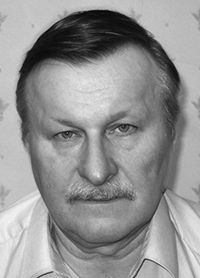PADDLING MACHINE FOR KAYAKING SPORT: BIOMECHANICAL TESTS AND BENEFIT ANALYSIS
Keywords:
kayaking techniques, paddling machine, biomechanics, EMG, benefit analysis, special strength, paddling cycle, paddling pace, water kayaking.Abstract
Objective of the study was to find to most beneficial individual paddling machine settings for the special strength training.
Methods and structure of the study. We used the G.M. Efremov Paddling Machine with a sliding seat and varied counterweights simulating the water resistance [3]; with the muscle electromyographic (EMG) activity fixed by a computerized Sportlab Test System (made in Russia) that includes an eight-channel telemetric electromyography, video camera, synchronizer and accelerometer [1]. We profiled the 1000Hz skin EMG of the following right-side muscles: m. triceps brachii_R, m. latissimus dorsi_R, m. vastus lateralis_R and m. gastrocnemius medialis_R. The EMG curves were inverted and smoothed by a moving average with a 50ms window; with the test process videos shot at 25 frames per second. We sampled for the tests 3 elite (Candidate Masters and Masters of Sport) kayakers.
The paddling machine test pace and resistant counterweight were varied in the ranges of 42 to 130 paddles/ min and 5 to 14 kg respectively.
The paddling cycle efficiency was rated by the EMG amplitude versus the competitive performance benchmarks.
Results and conclusion. Traditional strength trainings with squats with a barbell, bench presses etc. have proved ineffective or even harmful for the kayaking sports due to differences in the movement biomechanics. The Efremov Paddling Machine offers customizable strength training modes for the key paddling muscle groups, with the workouts managed so as to keep the average EMG amplitudes in the paddling machine workouts as close as possible to the actual water kayaking ones, otherwise arbitrary paddling machine settings may distort the individual competitive water kayaking stereotypes. As demonstrated by our study, the paddling pace and water resistance simulating counterweights of the paddling machine should be customized to the individual physical and technical fitness using the test data and analyses generated by modern biomechanical test systems.
References
Voronova A.A., Voronov A.V., Kvashuk P.V. Electromyographic methods to determine muscle groups to affect sports results in speed climbing. Teoriya i praktika fiz. kultury. No. 8. 2019. pp. 24-26.
Voronov A.V. Measuring devices with feedback: application in speed-strength training of skaters. Moscow: Sotsialno-politicheskaya mysl publ., 2010. 110 p.
Efremov G.M. Recommendations for the use of G. Efremov's simulator for training of elite athletes. Mir grebli. 2007. September. pp. 17-21.
Verlin S.V., Kaverin V.F., Kvashuk P.V., Semaeva G.N. Theory and methodology of kayaking and canoeing: analytical review. Voronezh: Tsentralno-chernozemnoe knizhnoe izdatelstvo publ., 2007. 173 p.
Fleming N, Done B., Mahony N. Electromiographic and kinesiological analysis of the Kayk Stroke: comparison of on-water and on-ergonomic data across exercise intensity. 12-th Annual Congress or the ECSS, 11-14 July 2007, Jyvaskale Finland.
Fleming N., Done B., Mahony N., Fletcher D. A biomechanical assessment of ergometer task specificity in elite flatwater kayakers. Journal of Sports Science and Medicine. 2012. Vol. 11. pp. 16-25.

Additional Files
Published
Versions
- 17-01-2022 (2)
- 01-12-2021 (1)

